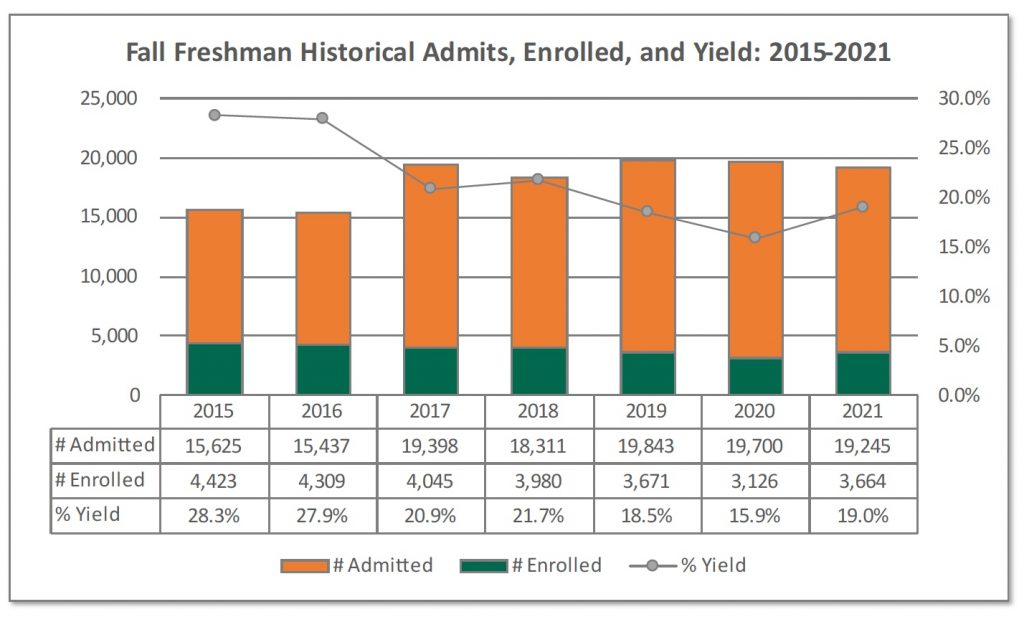Ohio University may see record freshmen enrollment in the fall
By: Olivia Roman
Posted on:
ATHENS, Ohio (WOUB) – Ohio University is on track to have the largest incoming freshmen class in over 50 years.
It was revealed at last week’s board of trustees meeting that 4,664 incoming freshmen have shown intent to enroll at OU this fall.
Since 1970, there have been only nine years where the freshmen class was over 4,000.
This year could break 2015’s record of 4,423 freshmen. Since that peak, freshmen enrollment decreased every year, bottoming out at 3,126 in 2020.
Last year, that enrollment climbed to 3,664 students. And if this year’s numbers hold, the freshmen class will be about 1,000 students higher. It would be by far the biggest year over year gain since at least 1970.

This number is made up of freshmen applicants who have confirmed their intent to attend OU by either putting down a $200 housing deposit or signing a commuter contract.
Because confirmations are based on the intent to enroll, this number could always drop.
Candace Boeninger, vice president for enrollment management, explained what she’s seen in past years.
“Typically we would, in some years, lose about a hundred or so of those students, sometimes a hundred and fifty from this point forward, and then we’ll count them of course at census, which is about two weeks after the start of the fall semester,” Boeninger said.
Even if this happens, OU would likely still set an enrollment record this fall.
The university has been struggling for the past several years to raise enrollment. About 50 percent of the university’s revenue comes from tuition and room and board. The enrollment declines resulted in deep budget cuts, including laying off hundreds of employees.
The board also received good news about the university’s financial state.
University officials announced they expect to end the fiscal year with a nearly $34 million surplus. This came as a welcome surprise given last year’s prediction of a $10 million deficit for this fiscal year, which ends June 30.
More than $25 million of that projected surplus is from federal COVID-19 relief funds.

